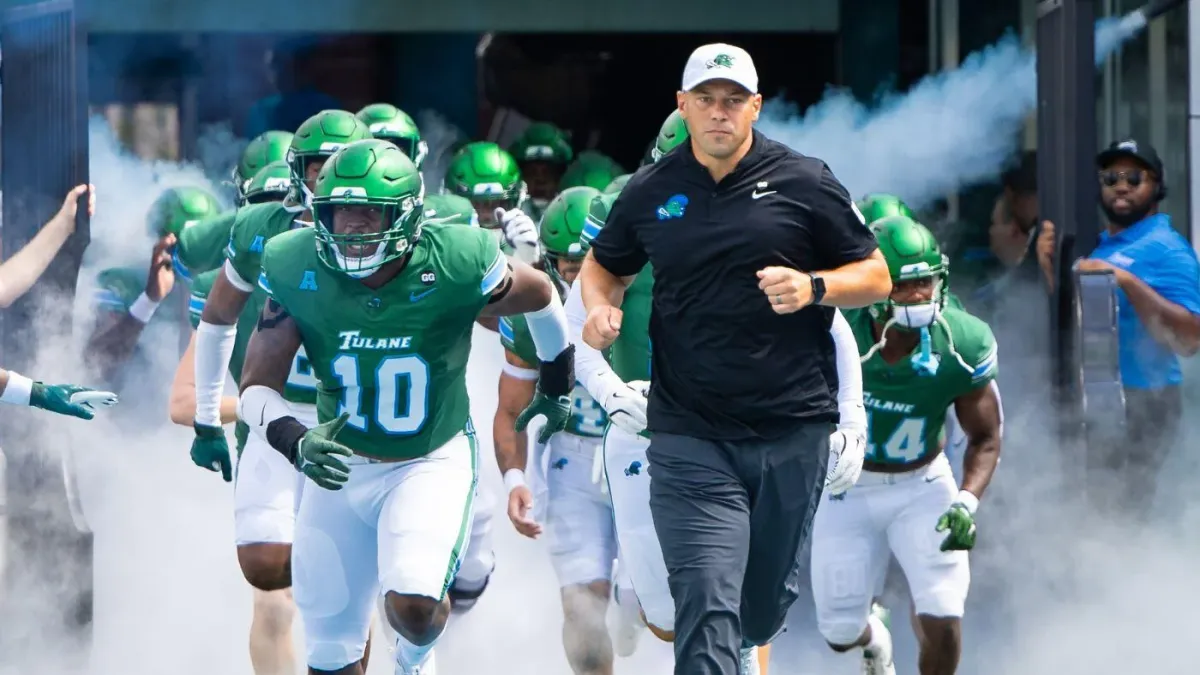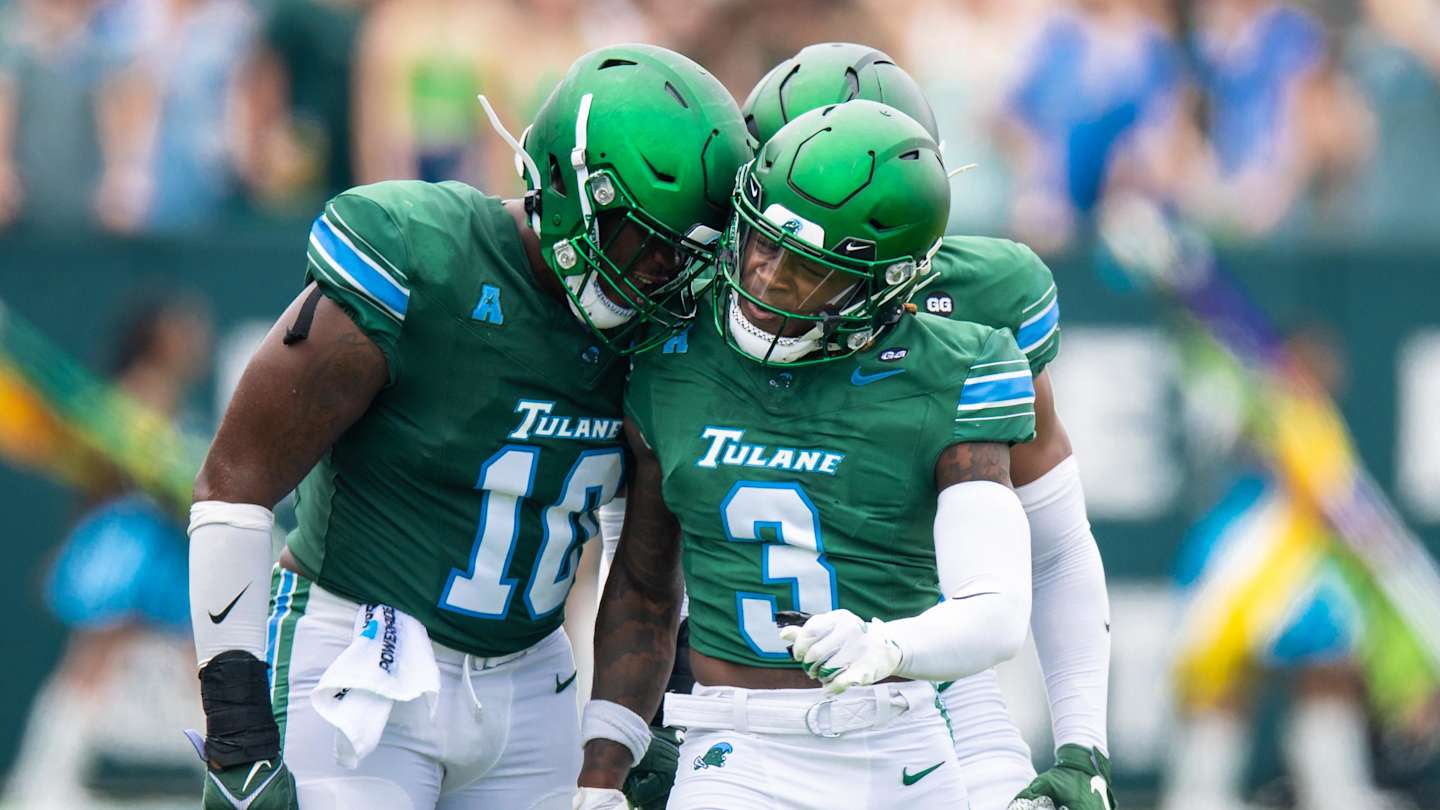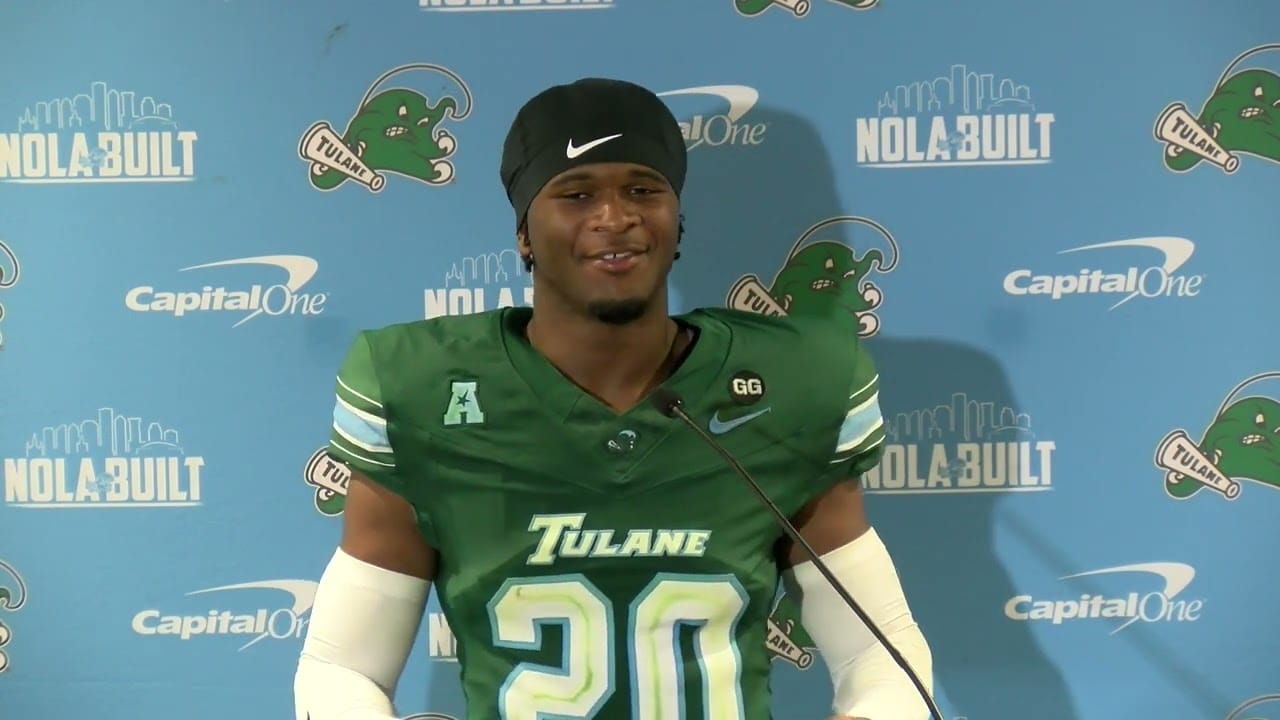A Tale of Two Jerseys: How a Hurricane Katrina Tribute Ignited a Firestorm of Controversy
On the 20th anniversary of Hurricane Katrina, Tulane football sought to honor its resilient past with a symbolic uniform tribute. The request was denied by Northwestern, sparking a heated debate over rules, respect, and the powerful bond between a team and its city.

Written by Lavanya, Intern, Allegedly The News
NEW ORLEANS, September 1, 2025
The air in New Orleans was heavy with more than just humidity on Saturday. It was filled with two decades of memory, resilience, and unshakeable pride. For the Tulane University football team, their season opener was intended to be a solemn and powerful tribute to the 20th anniversary of Hurricane Katrina, a storm that reshaped their city and their institution forever. Their plan was simple yet profound: to honor the 2005 team that had no home, wearing the same all-white uniforms they donned in their first game after the storm.
But a simple request was denied, and what followed was a lesson in how a seemingly minor decision can become a flashpoint for cultural and emotional tension. After Tulane's dominant 23-3 victory over Northwestern, Green Wave head coach Jon Sumrall didn't talk about the game-winning plays or the defensive dominance. He focused on a perceived slight that fueled his team's fire. "I'm not trying to take a shot, but we requested to wear white jerseys, because that's what that team wore," Sumrall said in his postgame press conference. "It got denied by the other team. That's their prerogative, but when you show disrespect to the city of New Orleans, that's what's going to happen to you. You're going to run into a team like this."
The story of Hurricane Katrina and the Tulane football program is one of displacement and eventual triumph. The storm made landfall on August 29, 2005, and with the city underwater and the Superdome damaged, the Green Wave were forced to play the entire season on the road. They played in 11 different cities that year, a nomadic journey that came to symbolize the resilience of a program and a city that refused to be defeated. The white-on-white uniforms they wore in their first game on September 17, 2005, at Mississippi State, became a visual symbol of that spirit. They had nothing but their uniforms and each other. For Tulane, this wasn't just about a throwback look; it was about honoring their history and their identity.
The Rules of Engagement: NCAA Regulations and the Denial
To understand the controversy, one must look at the official rulebook. The NCAA's football rules are clear on uniform colors. The visiting team must wear white jerseys. The home team, in this case, Tulane, wears its colored jersey. The only exception is if the visiting team agrees in writing to wear its own colored uniforms, allowing the home team to wear white. Northwestern, as the visiting team, had the ultimate authority. According to a source from Northwestern, Tulane's request was made on August 17, after the Wildcats had already packed and shipped their equipment, including their white road uniforms, to New Orleans for the game. From a logistical standpoint, Northwestern had a case. But from a human and emotional standpoint, the timing and the denial were seen as a major misstep.
The rules, while strict, are often bent for special occasions. College football is replete with examples of schools making exceptions for throwback games, memorial tributes, and other special events. For a team to deny a simple request for a 20th-anniversary tribute to a devastating natural disaster felt, to many, like an act of cold adherence to the rulebook without any understanding of the powerful emotional context. This is what fueled Coach Sumrall's outrage and the subsequent public backlash.
A City's Soul on Display: Why the Tribute Mattered
For the city of New Orleans, the memory of Hurricane Katrina is not a distant historical event; it is a part of their collective soul. The storm forced a city to rebuild from the ground up, to find strength in community, and to redefine itself. Tulane University’s recovery mirrored that of its hometown. The university shut down for an entire semester, displacing students and faculty. But the leadership, led by then-President Scott Cowen, committed to rebuilding a more resilient and community-focused institution.
The Tulane football program was an essential part of this rebirth. When the team returned to campus in 2006 for its first home game, it was a moment of immense symbolism and healing for the entire city. The athletic program's return to normalcy was a tangible sign that New Orleans was on the road to recovery. The 2005 team, which played every game on the road, became a powerful symbol of the city's perseverance. The uniform was the visual manifestation of that story. Wearing the all-white jerseys was a way for the current players to connect with the ghosts of the past—a tangible link to the program's most challenging and defining period. It was about honoring the players who were displaced, the city that was underwater, and the spirit that brought them all back home.

The Aftermath: Coach Sumrall's Comments and Social Media Reactions
Coach Sumrall’s comments were not an isolated outburst. They were a strategic and emotional move to rally his team and the fanbase. He understood that in a sports world increasingly driven by emotion and narrative, this was a moment to define his team's identity. His words went viral, spreading across social media platforms and igniting a firestorm. The immediate public reaction was overwhelmingly in favor of Tulane. Fans, media personalities, and even rival fanbases condemned Northwestern's decision.
Twitter and other platforms were flooded with posts using the hashtags #LetTulaneWearWhite and # Don'tDisrespectNOLA. The sentiment was clear: Northwestern, a university in Evanston, Illinois, was seen as an outsider that did not understand the gravity of the anniversary. One user tweeted, "Some things are bigger than football and following the letter of the law. You make an exception for a tribute to a natural disaster that almost destroyed a city." Another wrote, "Northwestern just solidified itself as the unlikeliest of sports villains. A complete lack of class." The controversy turned a routine season opener into a national news story and a public relations disaster for Northwestern, which was already under intense scrutiny for off-field issues.
The Historical Context: Uniforms as Tributes
The use of uniforms for tributes is not new. It's a common practice across all levels of sport, from high school to the professional leagues. Patches honoring fallen teammates, city-specific logos after tragedies, and throwback uniforms to commemorate historical milestones are all part of the tradition. After the Boston Marathon bombing in 2013, Boston sports teams wore "Boston Strong" patches, and in 2021, the entire NFL wore "9/11" patches to honor the 20th anniversary of the terrorist attacks. These are powerful visual displays of solidarity and remembrance.
NCAA rules have even been amended to allow for such gestures. In 2020, the NCAA Playing Rules Oversight Panel approved a measure allowing student-athletes to wear commemorative or memorial patches, not to exceed 2.25 square inches. While this rule applied to patches, the spirit of it allows for teams to honor significant events. Northwestern's refusal to accommodate a full uniform change, when many teams have done so for less impactful reasons, was seen as a profound lack of empathy.
The situation is a testament to the powerful, symbolic role that sports play in our culture. A team's uniform is more than just fabric and colors; it's a living symbol of its identity, its history, and its community. When you honor a uniform, you honor the people and the legacy behind it. When you deny that honor, you risk disrespecting the very foundation of the institution.
After the Storm: Tulane's Resilient Legacy
Tulane’s journey after Katrina is an inspiring narrative of rebirth and renewal. The university's strategic plan, the "Renewal Plan," led to a complete overhaul of its academic and athletic programs. They prioritized community-focused research and learning, with all students required to participate in service learning projects. The athletic department, once a source of financial strain, became a point of pride, with key hires leading to unprecedented success, culminating in a Sugar Bowl victory in 2022.
The controversy over the jerseys, in a way, reinforces the strength of that bond. It shows that even two decades later, the emotional weight of Katrina is very real for the Tulane community. The school's public image has been built on its resilience and its commitment to New Orleans. Northwestern’s denial, however unintentional, allowed Tulane to lean into that narrative and demonstrate its pride and unwavering connection to its city. The final score of 23-3 was a footnote to a much larger victory, a public display of a community's soul.

A Victory Beyond the Scoreboard
The uniform dispute between Tulane and Northwestern was more than a petty disagreement; it was a microcosm of a larger cultural issue. It showcased the disconnect between rigid institutional policies and the fluid, emotional nature of public sentiment. Northwestern's adherence to the rules, while technically correct, came at a significant cost to its public image. Tulane, on the other hand, leveraged the situation to further cement its identity as a resilient, community-focused institution. The incident proved that in the modern age of college athletics, a team's brand is as much about its values and its story as it is about its wins and losses.
The Questions That Remain
How can college athletic conferences and the NCAA create a more flexible framework for on-field tributes that honors institutional history and community ties without compromising fair play? In the court of public opinion, did Northwestern have a responsibility to prioritize empathy over rulebook adherence, and what lessons can other universities learn from this incident about brand management in a highly connected, emotional sports landscape?
Sources
NOLA.com, Yahoo Sports, Sports Illustrated, NCAA.org, and social media reactions from verified public accounts.




